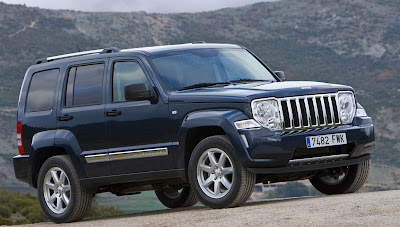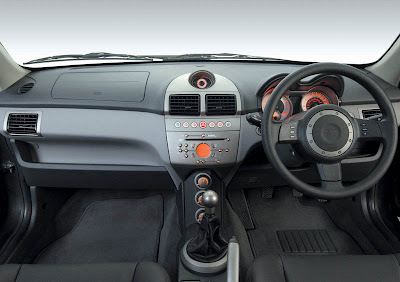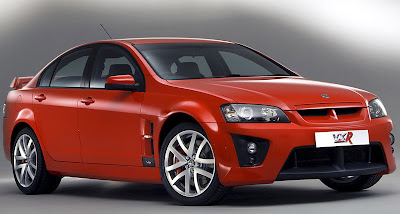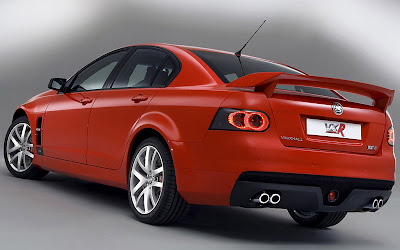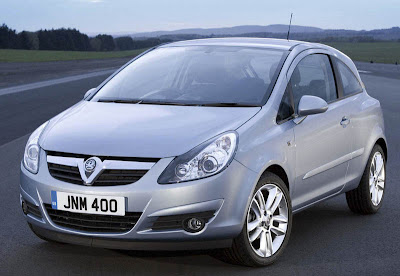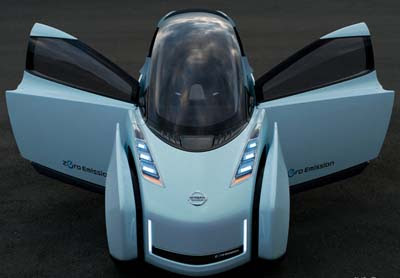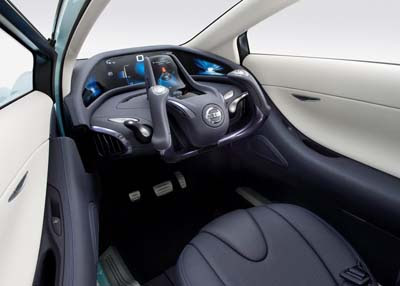It's human nature: Everyone wants to feel like a smart shopper -- like they've discovered a little-known product that delivers big-time bang for the buck. Perhaps something along the lines of the 2010 Hyundai Santa Fe, for example. While this affordable midsize crossover has struggled to achieve household-name status, a growing number of savvy buyers in recent years have found that the Santa Fe has some distinct advantages over its higher-profile competitors. Now, a few key improvements promise to make the 2010 model just that much more attractive.
While the Santa Fe's freshened exterior styling may be the most obvious change, the big news here is actually under the hood. The base engine is now a 175-horsepower 2.4-liter four-cylinder that replaces last year's 185-hp 2.7-liter V6. It's paired to a new six-speed automatic transmission, and the combination provides significantly better fuel economy as well as quicker acceleration The optional 276-hp 3.5-liter V6 is also new; it, too, provides better performance and fuel economy compared to last year's 3.3-liter V6.
The Santa Fe's already long list of standard comfort and convenience features also grows a little longer for 2010. Some desirable extras -- like leather upholstery and a sunroof -- are still available only on the top-of-the-line Limited trim level, but Bluetooth hands-free cell phone connectivity, steering-wheel-mounted audio controls and a USB audio jack have now trickled down to become standard across the model lineup. The optional touchscreen navigation system is also now offered on all three trim levels.
One notable deletion from the 2010 Hyundai Santa Fe's options list is the third-row seat. While going from a seven- to a five-passenger interior may put off some buyers, we don't consider it a great loss because that way-back seat was so cramped and difficult to access it was really only fit for small and nimble children.
While the Santa Fe has a lot going for it, it's not right for everybody. Those in search of a sportier driving experience would likely be happier with the Mazda CX-7 or Nissan Murano. If you're one of those folks who really needs a third-row seat, we'd suggest you check out roomier seven-passenger crossovers like the Chevrolet Traverse or Toyota Highlander.
That said, when you put these improvements together with an affordable MSRP, top crash test scores and a generous 10-year/100,000-mile powertrain warranty, the Santa Fe begins to look like a pretty smart purchase indeed.
For Pricing information, see our Pricing page.
Body Styles, Trim Levels, and Options
The 2010 Hyundai Santa Fe is a midsize crossover SUV that's offered in three trim levels: base GLS, sporty SE and top-of-the-line Limited. The entry-level GLS comes relatively well-equipped with 17-inch alloy wheels, heated side mirrors, rear privacy glass, air-conditioning, cloth upholstery, cruise control, a trip computer, full power accessories, 60/40-split-folding rear seatbacks and a six-speaker CD stereo with satellite radio and auxiliary audio and USB jacks.
The midrange SE model adds 18-inch alloy wheels, automatic headlights, foglamps, a roof rack and a rear spoiler. Cabin upgrades include unique cloth upholstery with leather inserts, a leather-wrapped steering wheel/shift knob, a power driver seat and an auto-dimming rearview mirror with compass.
Spring for the Limited and you get a sunroof, dual-zone automatic climate control, leather upholstery, heated front seats and a premium Infinity audio system with a six-disc CD changer. The Limited's sunroof and audio system are optional on the GLS and SE, as are heated front seats (SE only) and a navigation system with rearview camera.
For more Style information, see our Compare Styles page.
Powertrains and Performance
The 2010 Hyundai Santa Fe GLS and Limited come standard with a 2.4-liter four-cylinder that puts out 175 hp and 169 pound-feet of torque. A new six-speed manual transmission is standard in the GLS, while a new six-speed automatic is optional and standard with the Limited. All-wheel drive is optional. EPA fuel economy estimates range from 19 mpg city/26 mpg highway and 22 mpg combined for front-wheel-drive models equipped with the manual gearbox to 21/27/23 mpg for all-wheel-drive versions fitted with the automatic.
A 3.5-liter V6 that's rated at 276 hp and 248 lb-ft of torque is optional on the Santa Fe Limited and standard for the SE. The six-speed automatic is the only transmission offered here. V6 mileage estimates hardly dip from the four-cylinder, with an estimated 20 mpg city and 26 mpg highway.
For more Performance Data, see our Specifications page.
Safety
Electronic stability control, antilock disc brakes, active front head restraints, side-impact airbags for front seat passengers and rollover-sensing side curtain airbags are all standard on the Santa Fe. In government crash testing, the 2010 Hyundai Santa Fe earned perfect five-star ratings in both frontal and side impacts. Likewise, the Insurance Institute for Highway Safety awarded the Santa Fe its highest possible rating of "Good" in both frontal-offset and side-impact tests.
For more Safety information, see our Safety page.
Interior Design and Special Features
The Santa Fe's passenger cabin offers more than you might expect from a value-priced vehicle. The interior features attractive styling and quality materials that give it an upscale feel, especially on Limited models. A number of high-end standard features and options, including a navigation system with rearview camera, add to the feeling that you're somehow getting more than you paid for.
Some buyers may find it hard to get comfortable behind the wheel because of the overly high seating position and short bottom cushions that offer taller drivers minimal thigh support. The second row is another story, however, as it offers an above-average level of comfort.
The interior is also relatively cargo-friendly, with 60/40-split rear seatbacks that can be folded down to make a flat load floor. Maximum cargo area is 78 cubic feet, a number that's on par with comparably sized crossovers.
For more Interior Features information, see our Specifications page.
Driving Impressions
On the road, the 2010 Hyundai Santa Fe offers predictable if not exciting handling. The ride quality is generally good, though models fitted with the larger 18-inch wheels tend to be a bit harsh on rough pavement.
While we understand the thinking behind dumping the outgoing model's uninspiring 2.7-liter V6 for the much less thirsty new four-cylinder, the real-world fuel economy advantage it offers is negligible. If you can swing it, the new 3.5-liter V6 is the way to go.














